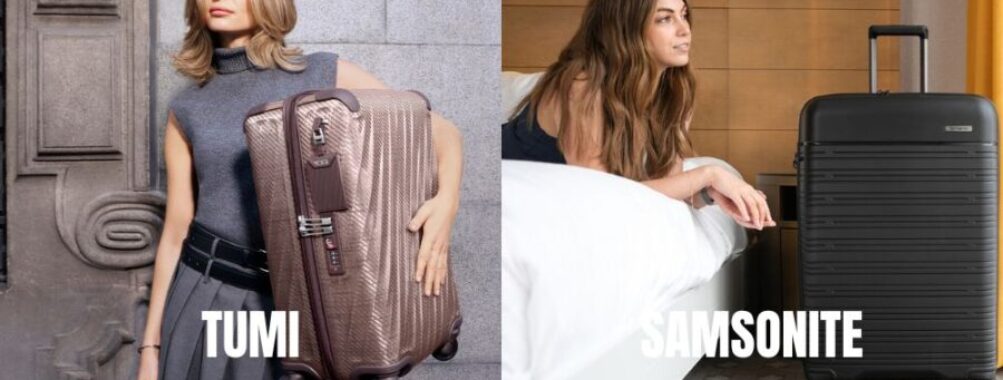
Tumi vs Samsonite: Which Premium Luggage Brand Offers Better Value in 2025?
If you’ve ever shopped for luggage, you’ve probably run into the Tumi vs Samsonite debate. Travelers who want to invest in a solid suitcase tend to compare these two brands.
Tumi sits firmly in the luxury lane, with prices starting around $850. Samsonite, meanwhile, has a much wider range and is a lot friendlier to your wallet.
I’ve noticed on my own trips that the two brands really do perform differently. A lot of travelers complain about Samsonite wheels, especially on rough surfaces like cobblestones.
Tumi seems to hold up better in tough conditions, but you definitely pay for that durability.
If you’re a frequent business traveler who values reliability, Tumi might be the splurge that makes sense. But if you only travel occasionally or you like to save where you can, Samsonite’s decent quality at lower prices is hard to ignore.
Contents
- Key Takeaways
- Brand Overview: Tumi and Samsonite
- History and Company Background
- Market Position and Reputation
- Product Range Comparison
- Suitcase Varieties
- Carry-On Options
- Travel Bags and Accessories
- Tumi Suitcases: Unique Features
- Materials and Construction
- Design and Customization
- Technology Integration
- Samsonite Suitcases: Unique Features
- Material Innovations
- Functionality and Design
- Sustainability Initiatives
- Durability and Warranty
- Warranty Policies
- Durability in Real-World Use
- Price and Value Analysis
- Cost Comparison
- Long-Term Value
- Traveler Experience and Customer Service
- Customer Support Quality
- Repair and Replacement Services
- Popular Alternatives to Tumi and Samsonite
- Comparison With Away and Travelpro
- Briggs & Riley, Rimowa, Delsey, and Eagle Creek Options
- Choosing the Right Luggage for Your Needs
- Matching Travel Style to Luggage Type
- Essential Travel Gear Features
- Frequently Asked Questions
- What distinguishes Tumi’s luggage materials and design from those offered by Samsonite?
- How does the durability and quality of Samsonite compare to that of Tumi’s premium offerings?
- In terms of organization and storage options, how do Tumi’s laptop bags stack up against Samsonite’s?
- When considering carry-on luggage, what are the practical size and weight differences between Tumi and Samsonite?
- What are the unique features of Tumi that justify its price point compared to Samsonite’s range?
- How do the warranty and repair services of Samsonite contrast with those provided by Tumi?
- More Travel Guides
Key Takeaways
- Tumi offers premium quality and durability at luxury prices starting around $850. Samsonite brings more affordable options to the table.
- Tumi’s wheel quality and overall durability edge out Samsonite, especially if you’re dragging your bag across bumpy sidewalks in Europe.
- Consider your travel frequency, destinations, and budget when picking between these two.
Brand Overview: Tumi and Samsonite
Tumi and Samsonite have very different takes on what luggage should be. Their price points and target markets don’t really overlap much.
Both have been around for ages and are big names in the travel world, but they serve different types of travelers.
History and Company Background
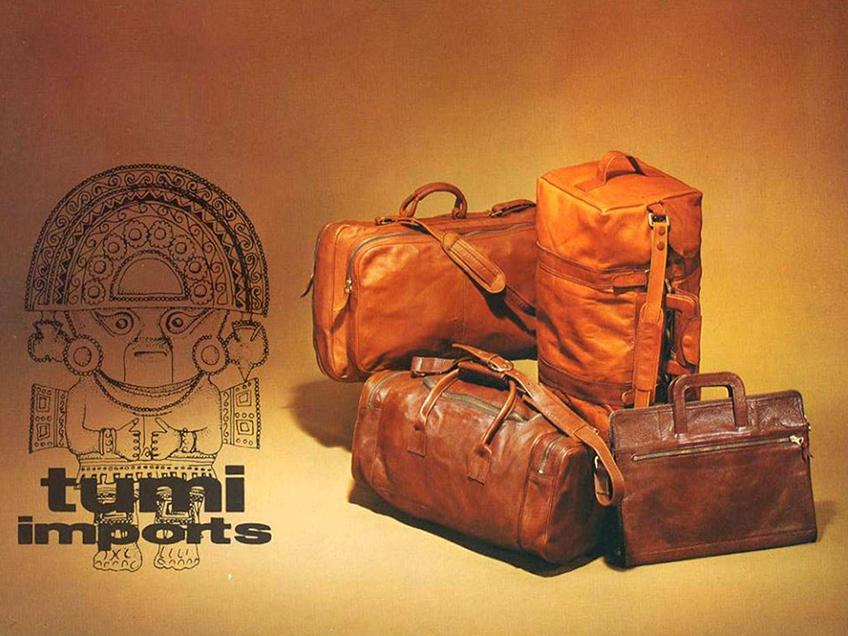
Tumi came on the scene in 1975, started by Charlie Clifford. The name comes from a ceremonial knife he learned about during his Peace Corps days in Peru.
At first, Tumi imported leather bags from South America. In the 1980s, they started making those now-iconic black ballistic nylon bags.
Samsonite actually owns Tumi now, after buying them in 2016 for $1.8 billion. Still, Tumi runs as its own luxury brand.
Samsonite’s story goes way back to 1910, when it started as the Shwayder Trunk Manufacturing Company in Denver. The Samsonite name was just a product line at first, inspired by the biblical figure Samson.
By 1966, the company adopted the Samsonite name across the board. Over the years, they’ve snapped up other luggage brands and now they’re the world’s largest luggage manufacturer.
Market Position and Reputation
Tumi plants its flag in the luxury luggage market, with prices starting around $850. The brand gets praise for exceptional quality, innovative design, and a bit of status appeal.
Business travelers and frequent flyers often pick Tumi for its durability and wheels that just glide—even over bumpy cobblestone.
Samsonite fills the mid-range luggage gap. Their bags are usually lightweight and make the most of packing space.
Some folks do complain about Samsonite wheels, saying they take more effort to maneuver compared to the pricier brands.
Both brands offer warranties, but Tumi’s is usually more comprehensive. You’ll spot Tumi bags in high-end department stores and boutiques, while Samsonite is pretty much everywhere—including luggage sales at big-box stores.
Product Range Comparison
You’ll spot some clear differences when you line up Tumi and Samsonite’s product ranges. Tumi sticks with premium, higher-priced options, while Samsonite offers a much broader variety and more approachable prices.
Suitcase Varieties
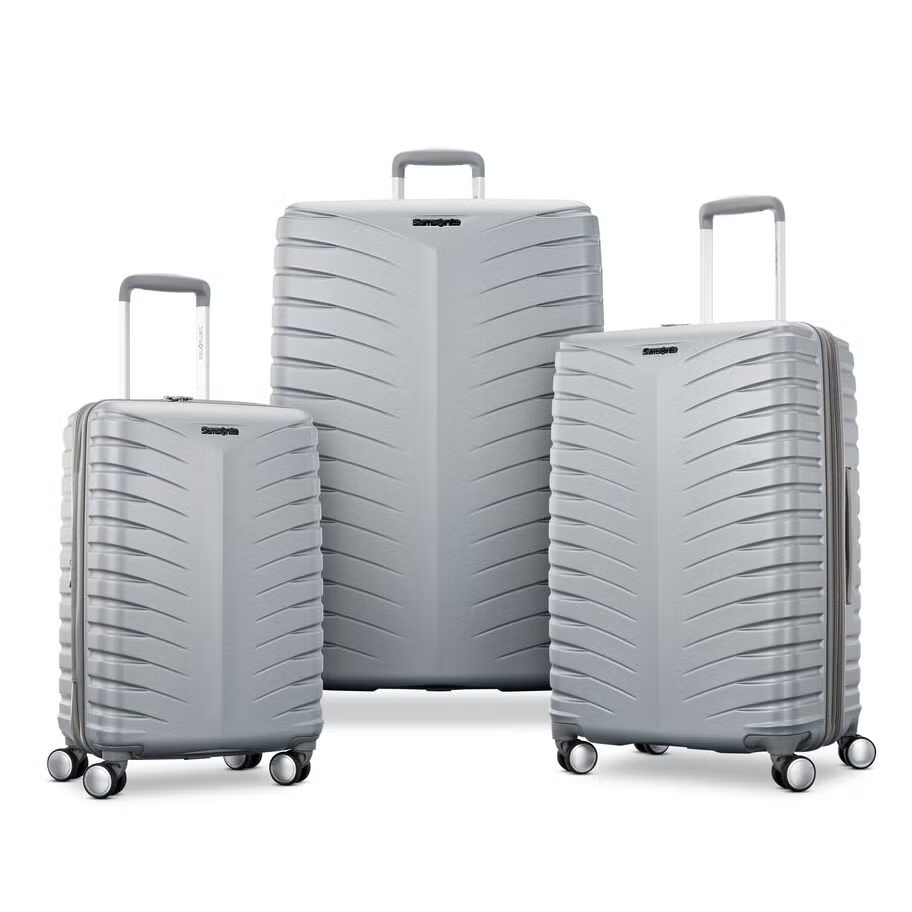
Tumi’s suitcase lineup is all about luxury. Their Alpha and Tegra-Lite series start around $850 and can climb above $2,000.
They use materials like ballistic nylon and polycarbonate composites, and you can tell they sweat the details.
Samsonite, on the other hand, gives you options for almost any budget. They have entry-level suitcases under $200, a big chunk of choices between $200 and $500, and their own premium lines like Silhouette and Black Label for people who want something fancier but not quite Tumi-level.
Both brands have hardside and softside cases. Samsonite offers more sizes and color choices, while Tumi leans toward classic, understated looks.
Tumi’s finishes feel more upscale, but Samsonite isn’t afraid of bright colors or limited edition patterns.
Carry-On Options
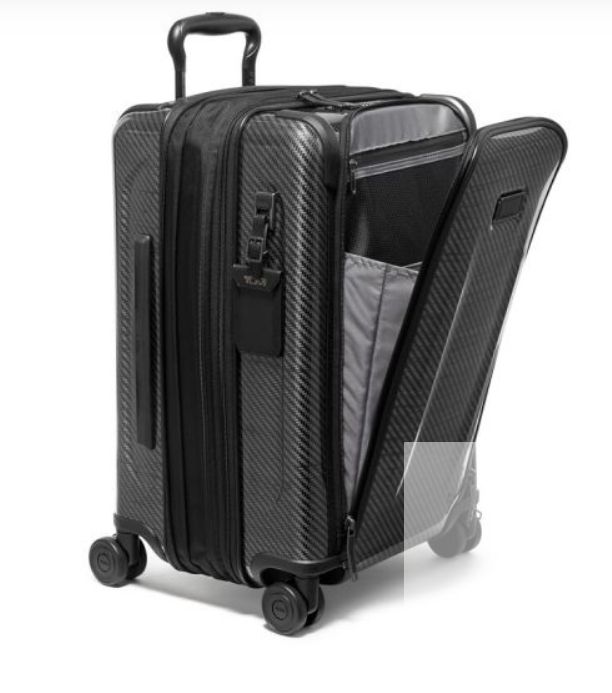
Tumi’s carry-ons focus on quality and functionality. Many expand by up to two inches and have wheels that roll like a dream.
Their International and Continental carry-ons start at about $850 and are easy to maneuver in tight airport spaces.
Samsonite’s carry-ons give you solid construction and good value. Collections like Omni PC and Winfield are popular for being durable without costing a fortune.
Both brands meet major airline size rules. Tumi usually packs in more organizational features, like suit compartments and a bunch of pockets.
Samsonite keeps things simpler—more space, less fuss, and often a lighter bag overall.
If you care about wheel quality, Tumi really stands out here. Plenty of travelers have complained about Samsonite wheels on rough ground.
Travel Bags and Accessories
Both brands have a ton of travel accessories, but they focus on different things.
Tumi shines when it comes to premium business and travel accessories:
- Laptop bags and briefcases
- Messenger bags
- Tech-protective backpacks
- Travel wallets and organizers
- Packing cubes and toiletry kits
Samsonite’s accessories are more about practical needs at moderate prices:
- Travel pillows and comfort gear
- Luggage tags and locks
- Basic toiletry kits
- Adapters and security items
- Simpler backpacks and totes
Tumi’s accessories keep up the luxury vibe, and the prices show it. Samsonite’s alternatives usually run about 30-50% cheaper.
If you’re a frequent business traveler, Tumi’s professional look and durability might be worth it.
Tumi Suitcases: Unique Features
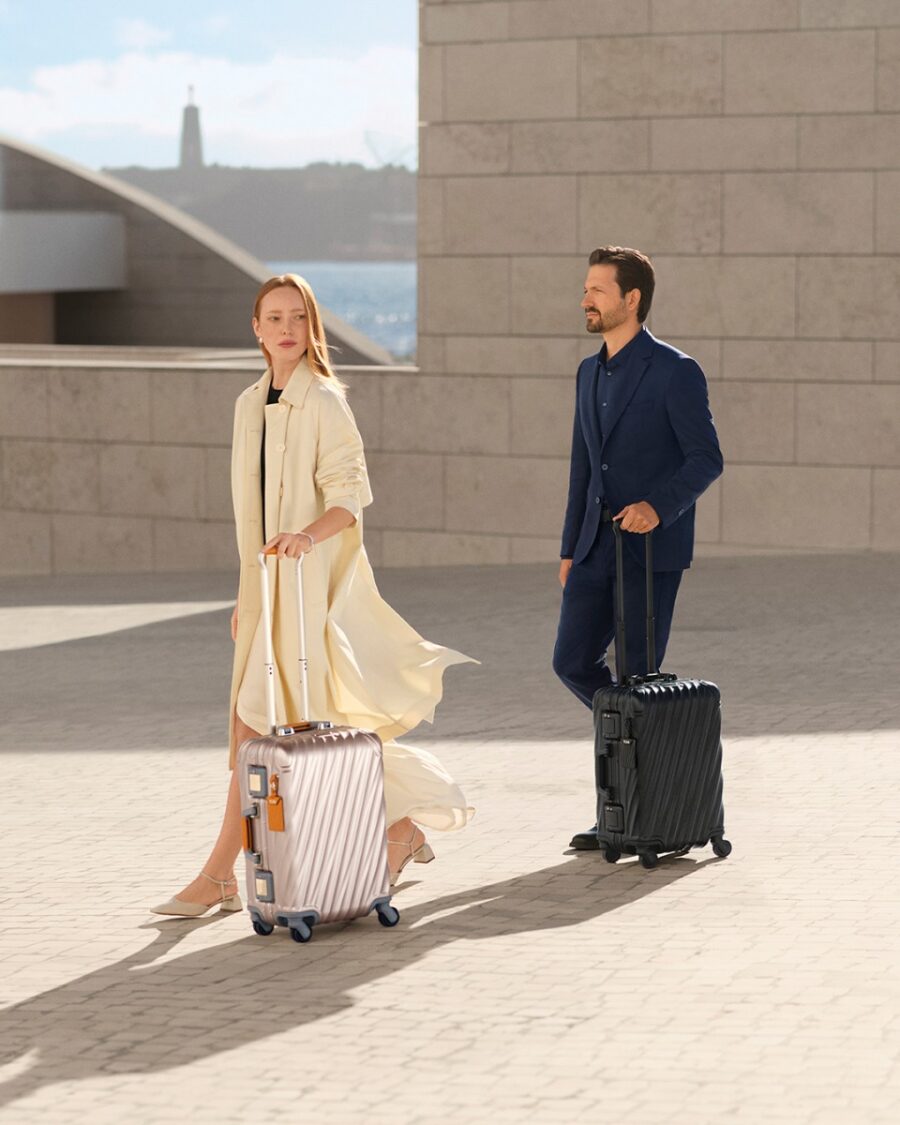
Tumi’s suitcases have a few standout features that help explain their price. The attention to detail and traveler-focused design really do set them apart for people who fly a lot.
Materials and Construction
Tumi uses materials that go above and beyond what you’ll find in most luggage. Their signature ballistic nylon—originally for WWII flak jackets—is crazy tough and abrasion-resistant.
You’ll spot gold-colored zippers on a lot of Tumi bags. They aren’t just for looks; they’re built to last longer than the usual zippers.
FXT Ballistic is another premium fabric they use, offering even more durability. Many bags have reinforced corners and impact-resistant frames, which protect your stuff if you’re dragging your suitcase over rough streets.
I really appreciate how solid the handles feel. Tumi makes their telescoping handles from aircraft-grade aluminum, and they rarely wobble or stick, even after a lot of use.
Design and Customization
Tumi sticks to a sophisticated, professional look with clever interior organization. Inside, you’ll find all sorts of compartments—pockets for electronics, documents, and personal items.
They offer monogramming, so you can put your initials or name on your bag. It’s a small thing, but it makes your suitcase easy to spot at baggage claim. I’ve found it surprisingly handy.
Color choices usually stay classic and understated, but they do release the occasional bold limited edition. The inside linings use premium fabrics with subtle patterns, which just feel nice.
Their compression straps and packing systems are well thought out. You can fit more in and keep your clothes from getting too wrinkled. Even the tie-down straps feel sturdier than what you find in cheaper bags.
Technology Integration
Tumi’s not afraid of tech. Their Tumi Tracer® program helps you track down lost or stolen bags using a unique 20-digit registration number.
A lot of Tumi suitcases come with integrated TSA-approved locks, so your stuff stays safe but security can still check if needed.
Some models even have USB charging ports, so you can juice up your phone while you wait for your flight.
The wheels really deserve a shout-out—the dual spinner system is super quiet and rolls smoothly in any direction. Navigating crowded terminals is a breeze.
Newer Tumi bags sometimes include RFID-blocking pockets, which protect your passport and credit cards from electronic theft. It’s a pricey feature, but if you travel internationally, it’s nice to have that extra peace of mind.
Samsonite Suitcases: Unique Features
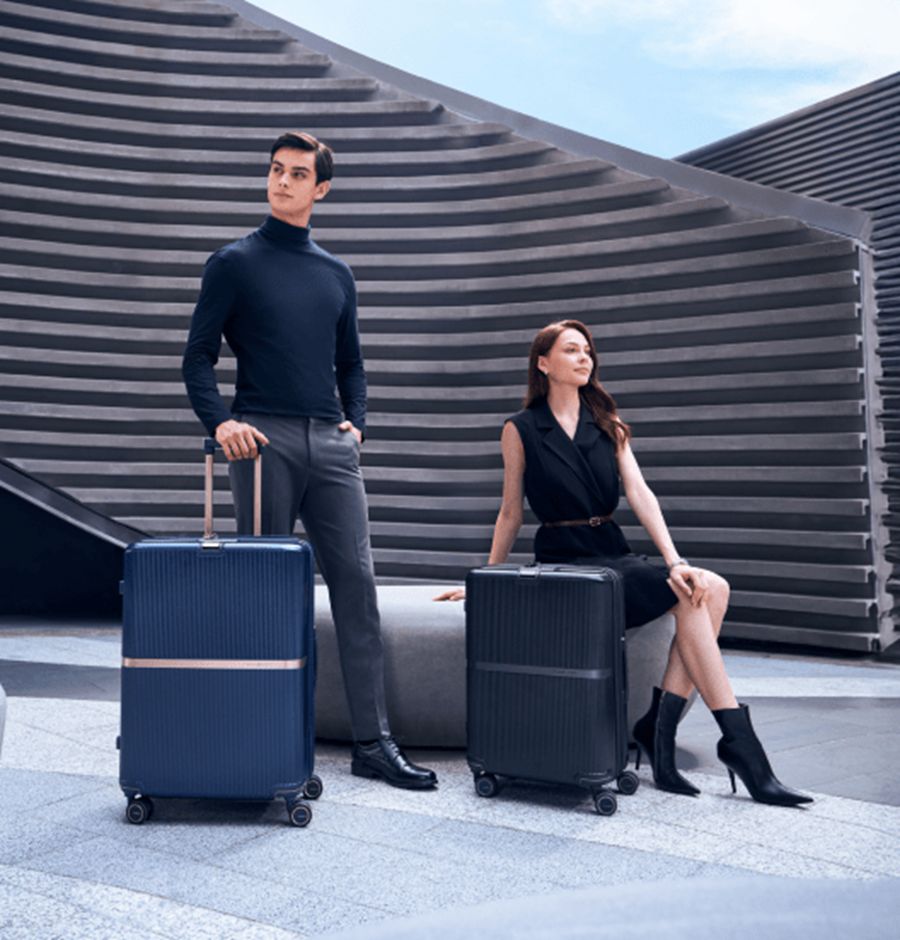
Samsonite manages to stand out in a crowded luggage market with features that punch above their price point. Their approach to materials, design, and sustainability is worth a closer look.
Material Innovations
Samsonite has built a reputation for using materials that are both tough and lightweight. They pioneered polycarbonate shells that can take a beating and keep your stuff safe.
A lot of their cases use Curv® technology—it’s a woven material that’s surprisingly strong but doesn’t weigh you down.
I’ve noticed their Neopulse line uses textured polycarbonate that hides scratches really well. If you hate seeing your bag get scuffed after one trip, you’ll appreciate this.
Their fabric cases often have water-resistant coatings and reinforced corners—basically, they try to prevent the most common types of damage. Some premium lines use ripstop nylon, which stops small tears from getting worse.
Functionality and Design
Samsonite packs in practical features that make traveling easier. Their expandable designs are a lifesaver if you tend to overpack.
Most Samsonite suitcases come with:
- Double spinner wheels for smooth movement
- TSA-approved locks
- Telescopic handles with several height options
- Compression systems inside to maximize space
Their compartments are pretty well thought out. You’ll see smart dividers, mesh pockets, and cross-straps that help keep clothes in place.
The Omni PC line, for example, has side-mounted TSA locks that are way easier to access than ones hidden underneath.
Sustainability Initiatives
Samsonite’s been stepping up their sustainability efforts lately. Their ECO collection uses recycled plastic bottles for the fabric linings—each medium bag gives about 21 bottles a second life.
They’re using biodegradable packaging and tags for a lot of products now. The S’Cure ECO line uses recycled polypropylene shells made partly from post-industrial waste.
Samsonite aims to cut carbon emissions by 15% by 2026 and is rolling out energy-efficient practices in their factories. They’re also experimenting with alternative materials.
Their repair programs are actually pretty cool—they’ll fix a lot of problems instead of just replacing your bag. That keeps more luggage out of landfills.
If you want your suitcase to last, Samsonite’s focus on durability could save you money in the long run, since you won’t have to replace your bag as often.
Durability and Warranty
Durability and warranty policies really matter when you’re choosing between Tumi and Samsonite. Both brands make quality products, but how they stand behind their luggage isn’t quite the same.
Warranty Policies
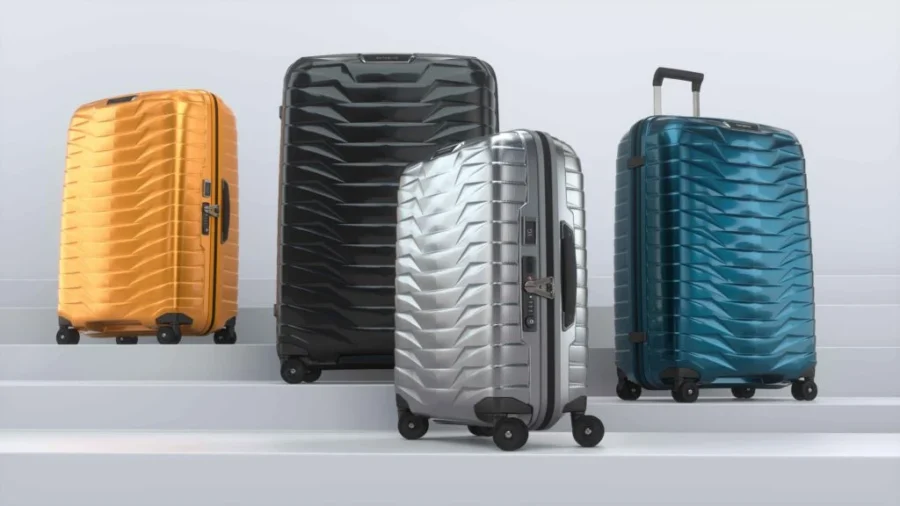
Tumi used to offer a lifetime warranty, but now it’s a limited 5-year deal. That covers manufacturing defects, but not regular wear and tear or travel damage.
Samsonite usually gives you a 10-year warranty on many of their suitcases. That longer coverage is a nice perk, especially if you’re a frequent traveler.
Both warranties have their fine print. Cosmetic damage isn’t covered, and you’ll need your proof of purchase to make a claim.
In my experience, Samsonite’s warranty process is more straightforward.
Warranties only go so far. Airlines almost never pay for damaged luggage, so it’s worth having a good warranty just in case.
Durability in Real-World Use
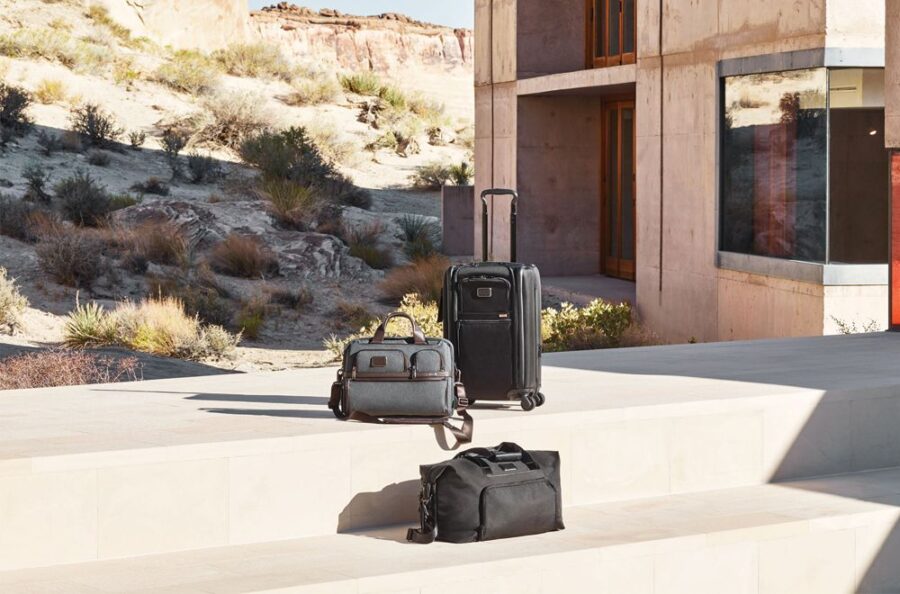
When it comes to durability, both brands hold their own. Tumi gets a lot of praise for using premium materials and building bags that survive years of rough trips.
Their ballistic nylon bags? Pretty much tanks.
Samsonite’s durability impresses too, especially for the price. Their hard-shell cases shrug off crushing, and even their soft-sided bags handle baggage handlers’ best efforts.
I’ve noticed Tumi wheels tend to outlast Samsonite’s, though Samsonite has definitely stepped up wheel quality lately. Zippers are solid on both, but Tumi’s hardware usually feels heavier in the hand.
For everyday travel, you’ll be fine with either. I’ve dragged my Samsonite through more than 30 countries, and it’s barely worse for wear.
Tumi sometimes edges ahead with details like reinforced corners and sturdier handles, but it’s not a blowout.
Price and Value Analysis
Price matters—a lot. Tumi and Samsonite target different crowds, with Tumi sitting firmly in the luxury lane and Samsonite offering something more wallet-friendly.
Cost Comparison
Tumi’s price tags start around $850 and can climb past $2,000 for fancier models. That’s definitely luxury territory.
They justify it with quality materials, craftsmanship, and a distinct look that stands out.
Samsonite, on the other hand, is way more accessible. You can grab a decent Samsonite carry-on for a fraction of Tumi’s entry price.
Honestly, you could buy two or three Samsonite bags for the cost of one Tumi.
Long-Term Value
Looking past sticker shock, value gets interesting. Tumi wins fans for “exceptional customer service” and a strong warranty, which makes the higher up-front cost sting less.
Travelers on forums often mention Tumi repairing or even replacing bags for free when things go wrong. That kind of support can stretch your luggage’s life by years.
Samsonite covers you with a warranty too, but it’s usually not as generous. Still, with the lower up-front cost, replacing a busted Samsonite can be cheaper than fixing a Tumi.
If you treat your luggage well, either brand should last for years. Tumi’s materials might give it the edge for road warriors.
Traveler Experience and Customer Service
After you’ve bought your bag, customer service can make or break the experience. Both brands approach this differently, and it matters when you’re stranded with a broken wheel in Barcelona.
Customer Support Quality
Tumi’s support matches its luxury vibe. When you reach out, you usually get a real person who actually wants to help. They seem to know their stuff and can give you advice that fits your situation.
Samsonite’s customer service works fine, but it feels more corporate. Sometimes you’ll wait longer, and the experience is more by-the-book.
Both brands offer support by phone, email, and in-store. Tumi’s physical stores can be a lifesaver if you need help right before a trip.
Repair and Replacement Services
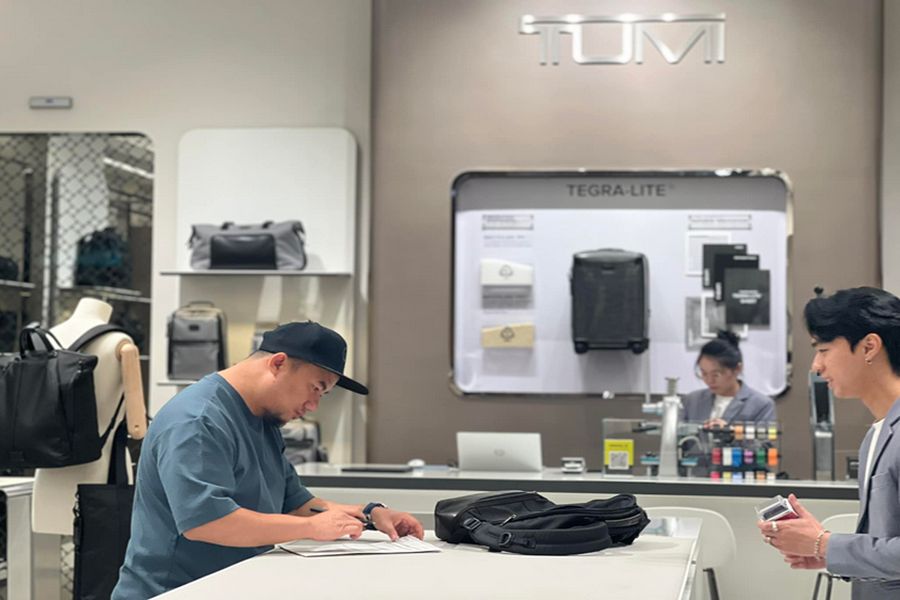
Tumi’s repair services really set them apart. Their 5-year warranty covers manufacturer defects, and they’ll fix a lot of damage—even from airlines or regular use.
You can just drop your bag at any Tumi store for an assessment, which makes things easy.
Samsonite’s warranty varies by product (usually 3-10 years) and focuses on manufacturer defects. They’ll often ask you to ship your bag to a service center, which can be a pain if you’re traveling.
Many travelers say Tumi is more generous with replacements when repairs aren’t possible. That service focus helps justify the premium price, especially if you see luggage as an investment.
Popular Alternatives to Tumi and Samsonite
Tumi and Samsonite dominate, but other brands are worth a look. Some focus on sustainability, others on clever features or good looks—so it’s worth shopping around.
Comparison With Away and Travelpro

Away has exploded in popularity. Their carry-ons include removable battery packs (handy, but airline-compliant) and a lifetime warranty.
Away costs less than Tumi, but more than Samsonite—kind of a mid-luxury pick.
I’ve wheeled my Away carry-on through dozens of airports, and the wheels have never let me down. That ejectable battery? It’s saved my phone more times than I can count.
Travelpro, invented by a pilot, is all about durability at a fair price. Their Platinum Elite collection brings features like:
- Self-aligning wheels
- Stain-resistant premium fabric
- Expandable sections for more packing
- Lifetime warranty on most bags
Flight crews love Travelpro, which says a lot about their reliability.
Briggs & Riley, Rimowa, Delsey, and Eagle Creek Options
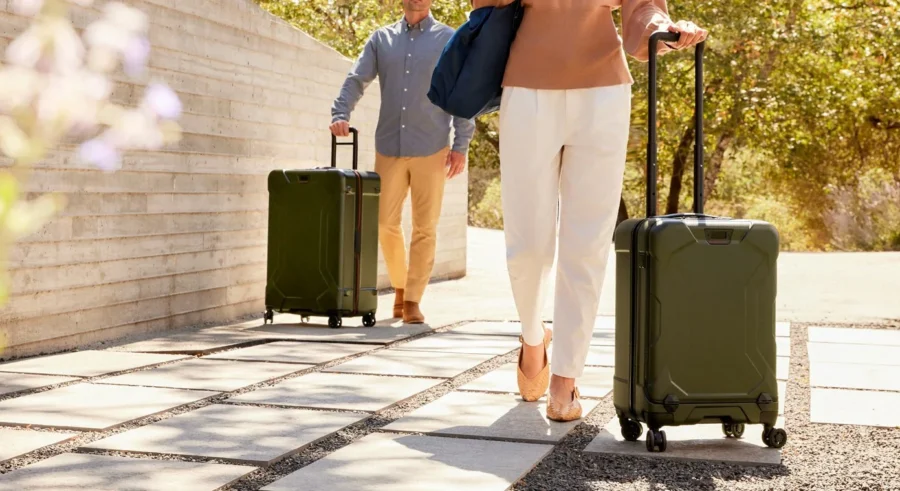
Briggs & Riley shines with their compression system—you can pack more and avoid wrinkles. Their prices aren’t low, but the “Simple as That” lifetime guarantee even covers airline damage.
Rimowa goes for a distinct look with grooved aluminum and polycarbonate shells. Their bags feature:
- Multiwheel 360° movement
- TSA locks
- Flex dividers for easy organization
Delsey brings French design to the table at better prices. Their Chatelet line mixes style and function, with brake systems that lock the front wheels when you stop.
Eagle Creek leans into adventure travel, using weather-resistant materials and smart organization. Their Cargo Hauler duffels double as backpacks, and Pack-It organizers help you squeeze more into any bag.
Choosing the Right Luggage for Your Needs
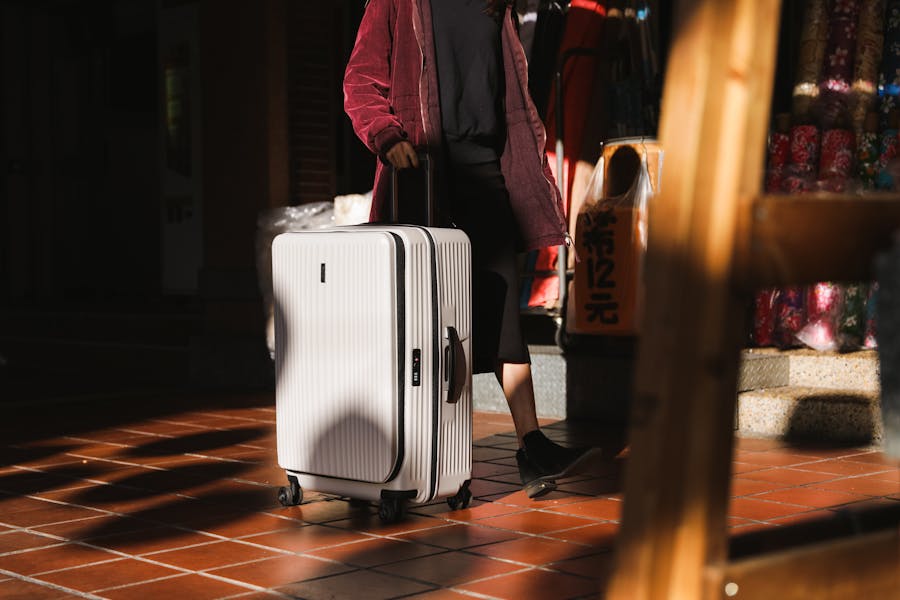
Finding the right bag is all about balancing quality, features, and price. Your travel style should steer the decision—there’s no one-size-fits-all.
Matching Travel Style to Luggage Type
If you’re constantly on the move, it’s probably worth investing in something like Tumi. Premium bags handle frequent use and rough terrain better.
Someone once told me, “Cobblestone streets will demolish the wheels on a weighed-down cheap suitcase.” I believe it.
For the occasional traveler, Samsonite is a solid value. Their carry-ons are light and surprisingly roomy—perfect for family trips or quick getaways.
Business travelers might lean toward Tumi for the sharp looks and smooth rolling in airports. When you’re sprinting for a connection, wheel quality matters. I’ve heard more than one person grumble about Samsonite wheels: “It takes a lot of effort to push/pull that thing around the airport.”
Essential Travel Gear Features
A few features are worth keeping on your radar:
Wheels & Maneuverability: Tumi usually wins here. Reviews say Tumi is “the smoothest to manoeuvre” among big brands. In crowded airports, that’s a big deal.
Expandability: Go for bags that expand—2 inches extra space can be a lifesaver after a shopping spree.
Weight-to-Space Ratio: Samsonite nails it with “lightweight and compact” designs that still pack plenty inside. That’s huge when you’re fighting airline weight limits.
Price-to-Quality Consideration: Tumi starts at $850 and climbs. Samsonite is friendlier to your budget. Ask yourself if the extras are worth the price for how you travel.
Frequently Asked Questions
Let’s jump into the most common questions travelers have when picking between these two brands. Sometimes the details make all the difference.
What distinguishes Tumi’s luggage materials and design from those offered by Samsonite?
Tumi uses premium stuff—ballistic nylon, aluminum, and hardware that feels built to last. Their look is sleek and businesslike, with thoughtful touches everywhere.
Samsonite sticks to polycarbonate, ABS plastic, and nylon. Their designs are practical, sometimes stylish, but definitely more budget-conscious.
Honestly, the material quality is where you’ll notice the biggest gap. Tumi’s ballistic nylon just feels more substantial.
Samsonite holds up well for most travelers. Their luggage survives regular use and the usual travel chaos if you treat it right.
Tumi’s top-tier bags take it up a notch—reinforced corners, better wheels, and higher-grade materials. I’ve seen 12-year-old Tumi cases still rolling strong, with free replacement parts along the way.
Samsonite is tough, but it might not go the distance quite like Tumi.
In terms of organization and storage options, how do Tumi’s laptop bags stack up against Samsonite’s?
Tumi laptop bags go all out on organization—padded laptop sleeves, tablet pockets, RFID-blocking sections, and hidden spots for valuables.
Samsonite keeps it practical. You’ll get the basics: a laptop compartment, business card holders, and a few pockets.
Tumi’s interior setup feels tailor-made for business travelers who want everything in its place. Samsonite is simpler, but still gets the job done.
When considering carry-on luggage, what are the practical size and weight differences between Tumi and Samsonite?
Tumi carry-ons tend to be a bit more compact and airline-friendly. Some, like the Alpha 3, weigh in at 10-12 pounds empty—which is a bit heavy.
Samsonite carry-ons often expand (like Tumi’s 2″ expansion), but they’re lighter. Most popular models are 7-9 pounds empty.
One review even said, “The Tumi case was the smoothest to manoeuvre out of the three cases” during a side-by-side test.
What are the unique features of Tumi that justify its price point compared to Samsonite’s range?
Tumi offers a global luggage tracking system—Tumi Tracer. If your bag goes missing, a finder can report it and help you get it back.
They obsess over details: premium zippers, reinforced corners, and top-tier wheels. Interiors often have antimicrobial linings and compression straps.
Let’s be honest—the luxury label matters too. People pay for the name, and Tumi’s lineup starts at $850 for a reason.
How do the warranty and repair services of Samsonite contrast with those provided by Tumi?
Tumi gives you a 5-year warranty that covers manufacturing defects and functional damage. Their repair team actually replaced a 12-year-old expansion lid for free, according to one customer.
Samsonite’s warranties range from 3 to 10 years, depending on which product line you pick. They cover manufacturing defects, but when it comes to repairs on older luggage, they don’t seem quite as generous.
Tumi’s customer service feels more premium, which makes sense given their luxury vibe. Samsonite’s support is solid and dependable, just with fewer bells and whistles.



